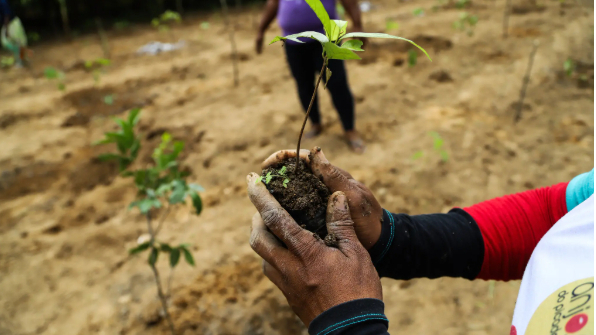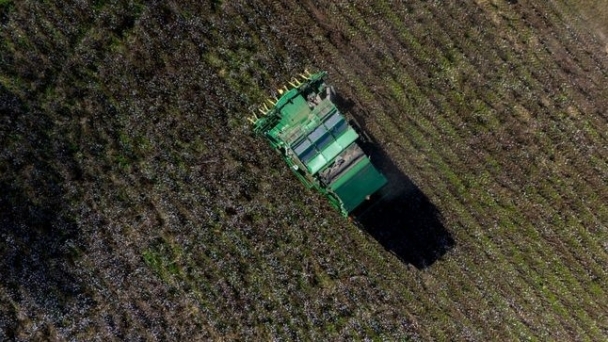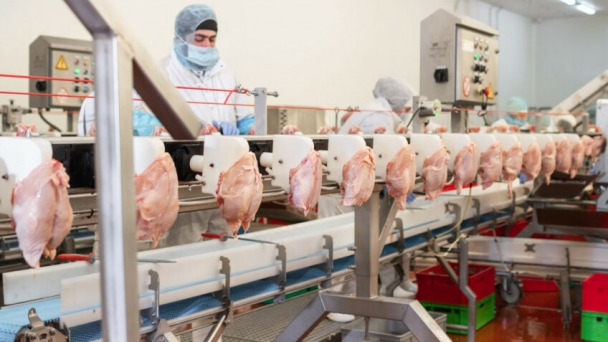December 24, 2024 | 23:05 GMT +7
December 24, 2024 | 23:05 GMT +7
Hotline: 0913.378.918
December 24, 2024 | 23:05 GMT +7
Hotline: 0913.378.918
That’s where a brilliant new invention called “electro-agriculture” comes in.
Some talented bioengineers suggest an alternative to photosynthesis which promises much improved energy conversion through electro-agriculture.
What if plants could be genetically modified to “consume” an organic molecule produced by a solar-powered chemical reaction that converts CO2 more efficiently than photosynthesis?
The idea is that with electro-agriculture, our reliance on land will decrease drastically. Imagine this: a 94% reduction in land needed for agriculture if all food in the US were produced using this method.
This could even solve the tricky problem of food production in space. With less dependence on sunlight and traditional agricultural fields, we’re looking at a future of multi-story buildings growing our food using electro-agriculture principles.
The soul and stature of this head-turning proposal are scientists Robert Jinkerson from University of California, Riverside and Feng Jiao from Washington University in St. Louis.
Jinkerson, a biological engineer, talks about moving agriculture to the next phase of technology, one that steps away from nature and takes advantage of controlled indoor environments through electro-agriculture.
Solar panels would be placed on or close to these multi-story buildings. These panels would absorb the sun’s radiation, powering a chemical reaction between CO2 and water, and producing acetate which is central in electro-agriculture.
Acetate, a molecule similar to the main component in vinegar, would then be used as food for hydroponically grown plants.
And, why just plants? Acetate is also consumed naturally by food-producing organisms like mushrooms, yeast, and algae.
Jiao, an electrochemist, tells us that this new process already has an efficiency of about 4%. That’s a four-fold increase compared to photosynthesis.
And the smaller CO2 footprint associated with electro-agriculture food production? How would the plants eat the acetate?
The scientists are exploiting a metabolic pathway that sprouting plants use to break down food, turning it back on for full-grown plants to consume acetate as a source of energy, which is the gist of electro-agriculture.
“We’re trying to turn this pathway back on in adult plants and reawaken their native ability to utilize acetate,” says Jinkerson.
“It’s analogous to lactose intolerance in humans — as babies we can digest lactose in milk, but for many people that pathway is turned off when they grow up. It’s kind of the same idea, only for plants.”
The transformation from traditional agricultural practices to electro-agriculture is not just about feeding more people efficiently; it carries profound potential benefits for the environment.
Conventional farming methods often lead to significant deforestation, which is a major contributor to biodiversity loss and climate change.
By drastically reducing the amount of land required for crop production, electro-agriculture presents an opportunity to reverse some of the ecological damage caused by clearing land for agriculture.
Moreover, with its reduced reliance on fertilizers and pesticides, which can contaminate waterways and impact aquatic ecosystems, this innovative approach offers a promising alternative towards more sustainable food production methods.
Embracing electro-agriculture could facilitate the gradual restoration of natural habitats, enhancing biodiversity and contributing to a more resilient planet.
Despite the huge potential of electro-agriculture, significant challenges remain. One key issue is the initial setup cost and maintenance of solar-powered chemical reactors, as well as the infrastructure needed to support large-scale indoor farming facilities.
Additionally, there is a need for further research to understand the long-term impacts on plant physiology when relying on acetate as a primary energy source.
The genetic modification of plants to reinstate certain metabolic pathways could also face regulatory and public acceptance hurdles.
Furthermore, while current efficiency outpaces traditional photosynthesis, there is always room for improvement as technology advances.
While the research is still in initial stages focusing on tomatoes and lettuce, there are plans of expanding it to staple high-calorie crops like sweet potatoes, cassava, and grains.
The scientists have already succeeded in engineering plants that can use acetate in addition to photosynthesis.
“For plants, we’re still in the research-and-development phase of trying to get them to utilize acetate as their carbon source, because plants have not evolved to grow this way, but we’re making progress,” says Jinkerson.
“Mushrooms and yeast and algae, however, can be grown like this today, so I think that those applications could be commercialized first, and plants will come later down the line.”
The scientists, undoubtedly, are keen on refining the acetate production method to make the carbon-fixation system even more efficient.
“This is just the first step for this research, and I think there’s a hope that its efficiency and cost will be significantly improved in the near future,” says Jiao.
To sum it all up, electro-agriculture is an exciting frontier in food production technology. If successful, it promises to be an environmentally friendly and space-efficient method that could revolutionize the concept of food production itself.
Jinkerson and Jiao remain optimistic, positioned at the forefront of electro-agriculture, and stress the importance of continued interdisciplinary collaboration.
As their research progresses, they envision not only overcoming these challenges but also refining electro-agriculture into a universally sustainable, accessible, and adaptable method of food production.
earth

(VAN) We tend to look at environmental problems in isolation. A holistic approach would be more effective, a new report says.

(VAN) Twisted equipment and snapped tree limbs still litter Chris Hopkins’ Georgia farm more than two months after Hurricane Helene made its deadly march across the South.

(VAN) The US poultry processing industry has long relied on illegal workers, but huge adjustments are going to have to be made after President-elect Donald Trump takes power on 20 January 2025.

(VAN) Drought is projected to affect 75% of the world's population by 2050. Take that in.

(VAN) Voice of Animals, a Russian NGO, has prepared amendments to the draft veterinary regulation in the poultry industry, which is scheduled to come into force on 1 August 2025.

(VAN) From the FAO Regional Office for the Near East and North Africa.

(VAN) A year of change for both the UK’s broiler and egg sectors is highlighted in this year’s Andersons annual Outlook report.